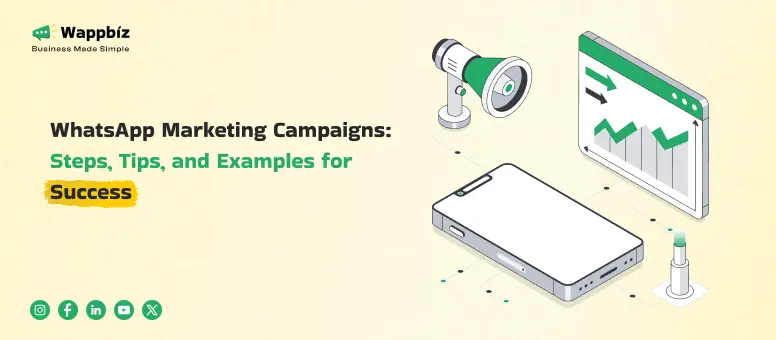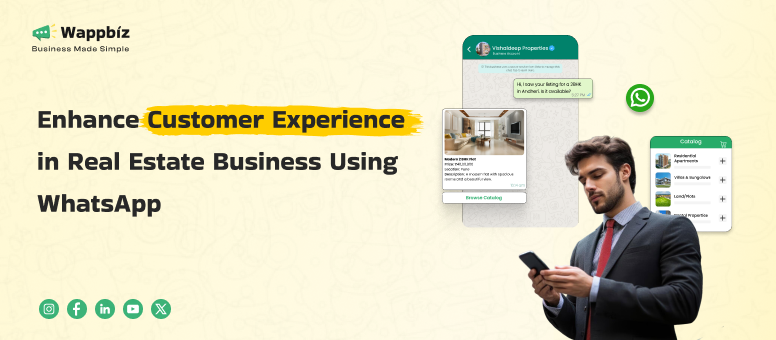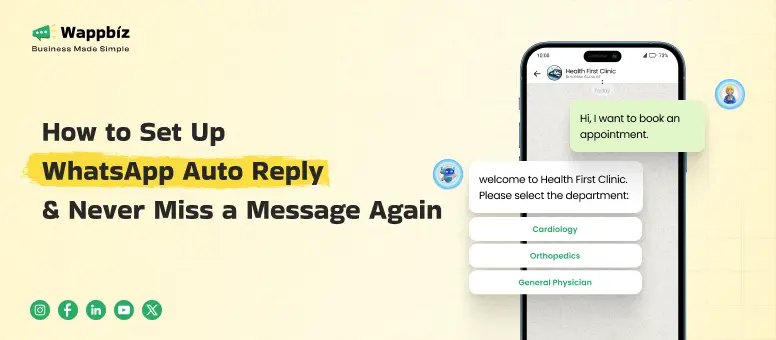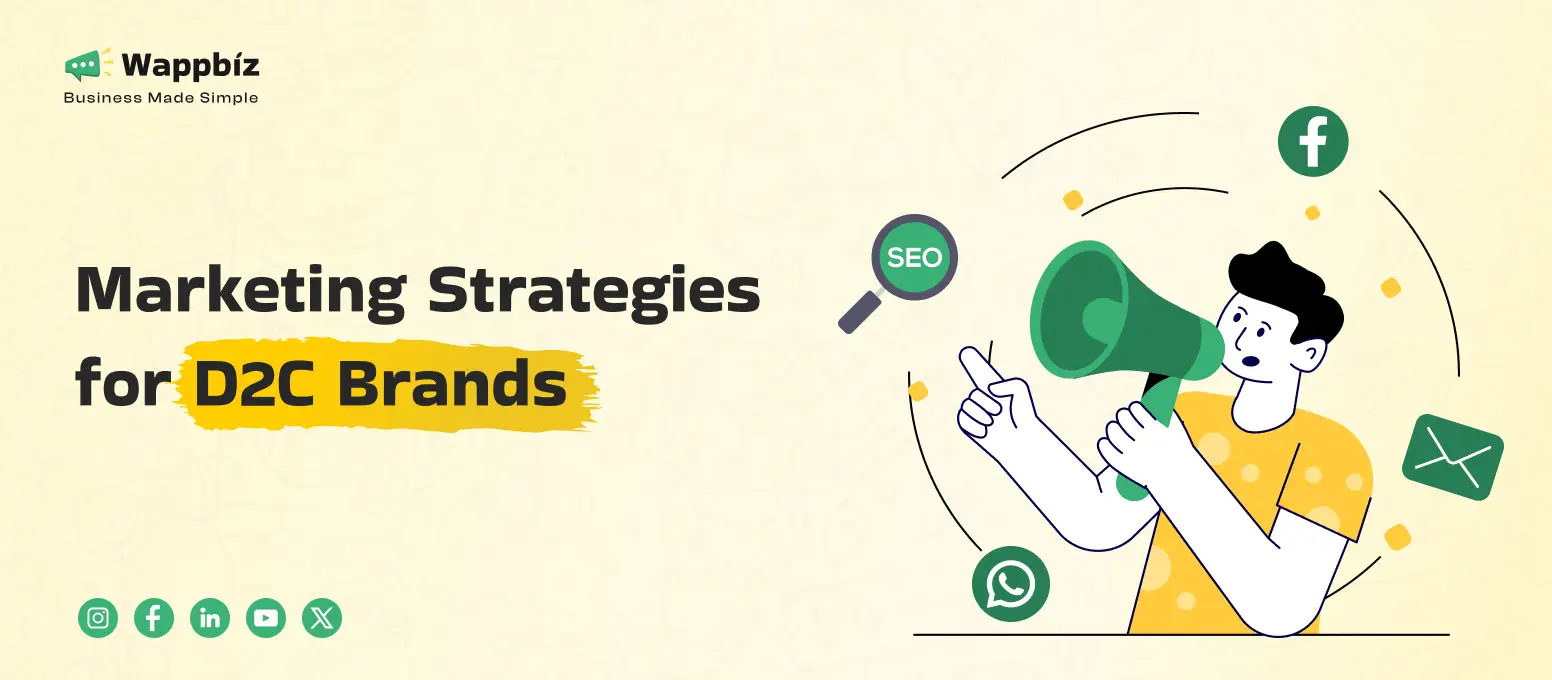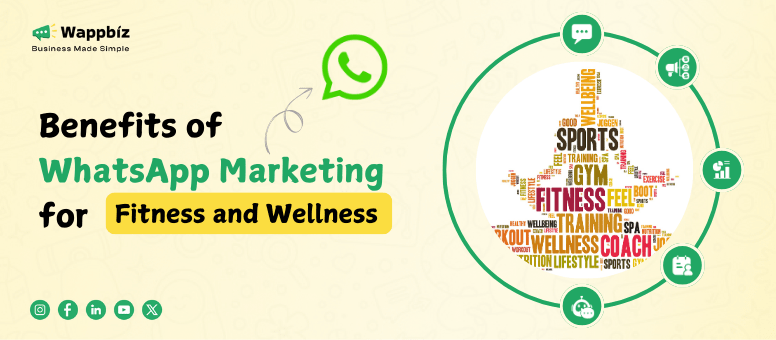In today’s fast-paced digital landscape, WhatsApp has emerged as a powerful tool for businesses to connect with their audience. With over 2 billion users globally, it offers an unparalleled opportunity to launch targeted marketing campaigns that drive engagement and conversions. But how can you effectively harness the power of WhatsApp for your marketing needs?
In this guide, we’ll walk you through the essential steps to create and manage successful WhatsApp campaigns. From building your contact list to crafting compelling messages and measuring performance, this guide covers everything you need to know to make your campaigns a success.
What is a WhatsApp Campaign?
A WhatsApp campaign is a strategic way of promoting your company done on WhatsApp, like the WhatsApp business API and chatbots. Businesses use these campaigns to push notifications, offers, or other important information to customers’ devices. The advantage? Nearly instant engagement. Much unlike email marketing, you get to open messages on WhatsApp at once, which opens real-time communication for businesses to come together with their audience.
The WhatsApp Business API powers these campaigns, allowing businesses to automate and personalize their messages, driving down the costs and increasing the relevance and effectiveness of the marketing. Campaigns can be as simple as a product announcement or as complex as automated workflows based on customer action. Chatbots Integration businesses offering instant customer support through chatbot integration can create improved customer satisfaction and interactive experiences.
Why Are WhatsApp Campaigns Important for Businesses?
- High Open Rates: WhatsApp messages are straightaway read quite frequently after they’re obtained, which is so much more effective than recurring email advertising campaigns.
- Easing Engagement: Businesses interact with their consumers in real time using WhatsApp, receiving rapid responses and increasing customer happiness.
- Cost-Effective: When compared to traditional marketing, WhatsApp campaigns can also be low-cost (no expensive ad placements, no big marketing budgets), which makes them great for small businesses.
- Direct Personal Communication: WhatsApp allows businesses to communicate with the customer directly in the app where they spend a lot of time, resulting in very high engagement.
Uses of WhatsApp Marketing Campaign:
- Product launch announcements: Generating anticipation among the customers with sneak peeks or pre-launch offer updates and releasing them on priority would gravitate them toward the product.
- Holiday Campaigns: Increase sales with holiday-themed campaigns, giving discounts that create urgency and scarcity.
- Webinar Invitations: Event invitations can be in the form of a personalized invite via email to any event, be it a webinar or in-store event, to increase engagement and attendance.
The WhatsApp Business API allows businesses to automate their responses, track the engagement of their campaigns, and adjust their strategies using the performance data gathered to ensure maximum effectiveness.
WhatsApp Marketing Campaign Examples: Real-World Success Stories
These are some successful WhatsApp marketing campaigns that prove the capabilities of the platform:
Example 1: Nike Product Launch: Personalized Makeover Everyone Is a VIP
Nike was launching a new sneaker collection, but it didn’t want to simply announce it wanted to offer something loud, exclusive, and 1-on-1.
Nike now has a WhatsApp virtual assistant chatbot that interacts with customers to determine their style preferences over a few days and connect them to sneakers that fit their preferences. The chatbot also provided behind-the-scenes stories, styling advice and sneak peeks at limited-edition launches, positioning shoppers as VIPs.

Why It Worked:
- It felt exclusive and personal.
- Then making shopping easier through recommendations?
- Direct Conversations resulted in strong customer relationships.
Results:
It worked; even more pre-orders and sales were driven than ever before, and customers warmed to the more personalized approach, rather than a blanket advertisement contact.
Example 2: Domino’s Pizza – Ordering Has Never Been So Easy
Domino’s realized that convenience was the secret to food delivery. Instead of asking customers to visit a website and download an app, they nestled their ordering systems inside WhatsApp. With a simple chat, customers were able to view the menu, customize their pizza, order and pay. It was also easy to use, as the automated chatbot provided real-time order updates.

Why It Worked:
- Removed friction from the ordering process.
- Allowed customers to order through a familiar, easy-to-use interface.
- Provided real-time updates, calming customers’ jitters about their deliveries.
Results:
Domino’s saw a huge increase in orders, especially for users in the mobile space, who reported that chatting was a lot easier for them to handle than filling out a traditional ordering application.
Example 3: BookMyShow’s Ticket Confirmation service—No More Lost Emails
If you’ve purchased tickets online at any point, you’re familiar with the sensation of rifling through your inbox in search of the confirmation. Enter BookMyShow, India’s leading ticketing platform, which solved this issue by sending tickets via WhatsApp. Gone were the days of waiting for email; users received their QR-coded ticket directly in WhatsApp instantly. No sign-in, no search, but a simple, immediate confirmation.

Why It Worked:
- Removed the steps that did not belong in the customer journey.
- Less customer support on issues with missing or delayed email tickets.
- Created a habit: users started to look forward to their ticket confirmations via WhatsApp, leading to more engagement with the platform.
Results:
This initiative not only promoted customer satisfaction, it also solidified what the preferred platform would be for ticketing-related communication with customers.
Example 4: Sephora’s Beauty Tips Campaign — Personalizing Skincare & Makeup Advice
Instead of hammering away at only product, Sephora had a value based approach by providing personalized beauty advice via WhatsApp.
Users might subscribe for daily or weekly information regarding their beauty needs, receiving treasured skincare recommendations, makeup tips and even unique products tailored for their requirements. The WhatsApp automation allowed interactive sessions where users could ask questions and get advice in real-time.
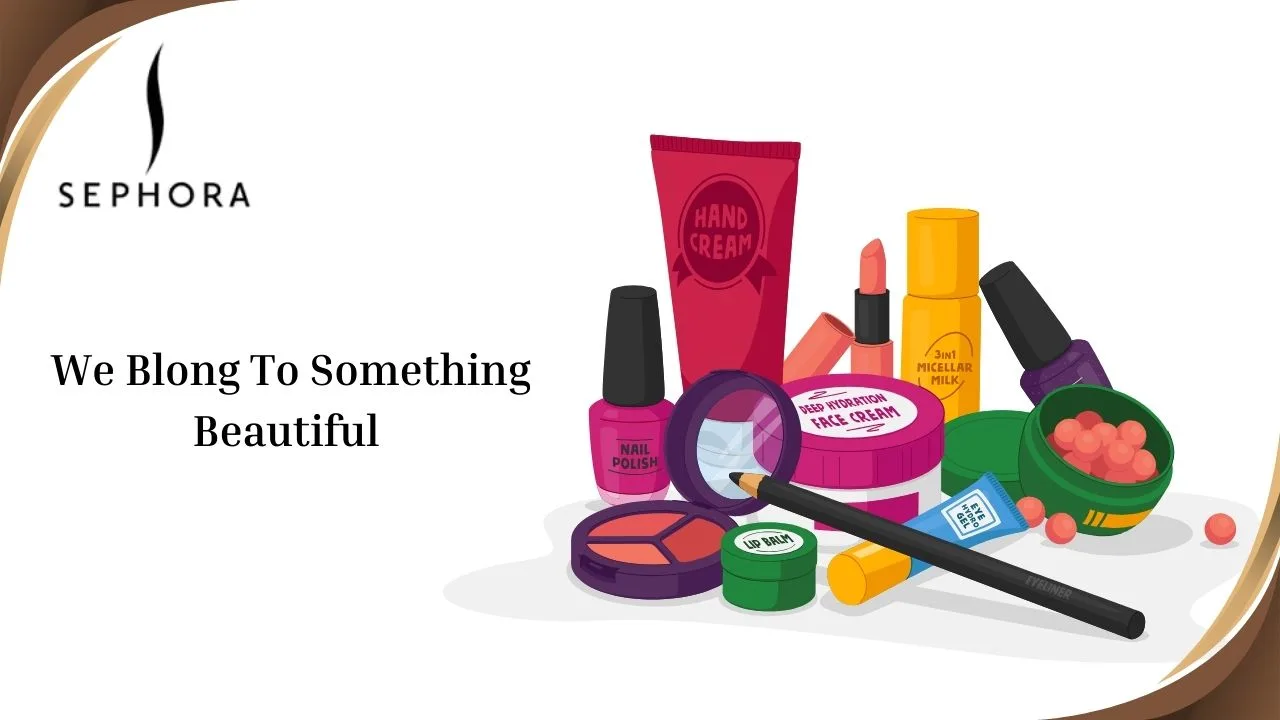
Why It Worked:
- It was real engagement, not promo-grams.
- Drew special attention to Elsie with the marketing, helping to rebrand Sephora to a trusted beauty advisor instead of a retailer.
- These best practices encourage two-way communication, as well as helping customers feel as though their voice counts.
Results:
As users felt more aligned with Sephora as a brand, user retention and sales increased simply based on the fact that they were more likely to purchase what they would recommend.
Example 5: KLM Royal Dutch Airlines — Seamless Travel Support
KLM, for instance, activated WhatsApp as a solo communication channel for travelers. Customers could receive their boarding passes, live flight and baggage status information and even contact customer support through WhatsApp. Instead of long customer service wait times, passengers could get fast help via chat.

Why It Worked:
- Less Reliance on Customer Support Hotlines Easy, low-stress updates for travelers.
- Minimized friction and cultivated a frictionless experience.
Results:
WhatsApp now represents upwards of 40% of KLM’s digital interactions and is one of the most popular channels of communication for travelers.
Example 6: BMW — Customer Service & Test Drive Bookings
BMW bolstered its portfolio of after-sale channels to communicate with customers by adding WhatsApp: users can book service appointments, receive maintenance reminders or simply ask questions about their cars. Also, potential buyers can book test drives via WhatsApp, simplifying it even further.

Why It Worked:
- Increased real-time conversation with customers.
- Convenient for customers with a short schedule Increased user-friendliness leading to greater customer satisfaction.
Results:
For example, BMW booked more service appointments, test drives and ultimately sales. These examples showcase the power of WhatsApp campaigns for businesses. From personalized product suggestions to streamlined service provision, organizations across sectors have effectively leveraged WhatsApp to create consumer commitment and expand revenue growth.
These examples illustrate how versatile and impactful WhatsApp campaigns can be. From personalized product recommendations to streamlined service delivery, businesses across industries have successfully utilized WhatsApp to build customer loyalty and drive revenue growth.
How to Create a Campaign in WhatsApp: A Step-by-Step Guide
Creating a successful WhatsApp campaign involves a mix of strategic planning, audience understanding, and utilizing the right tools. Here’s a comprehensive breakdown of each step to help you build and execute a highly effective campaign:
Step 1: Create your WhatsApp business account
To initiate your campaign, you must first create a WhatsApp Business Account. This type of account is meant for businesses and allows you to create a company profile that features:
- Business Name & Logo: Make your brand recognizable instantly.
- Business Info: Add your business address, website, and contact info for convenience.
- Business Hours: Communicate your availability for responding to inquiries to bolster trust and manage expectations.
Read Also: WhatsApp Business Account: One Of The Best Tools For Your Business
If you wish to scale up your marketing and automate interactions, you must integrate with the WhatsApp Business API. The API also offers features like messaging automation, audience segmentation, and CRM integration.
- Setup: Download the WhatsApp Business App on the App Store or Google Play Register your (business) number (ideally different from your personal number) and fill out your profile. The API is ideal for more real-world operations but requires help from a WhatsApp Business Solution Provider.
Step 2: Defining Your Campaign Goals
Clearly defining your goals is crucial for crafting an effective campaign. Ask yourself: What do you want to achieve?
- Increase Sales: Encourage immediate purchases through promotions or discounts. Strengthen
- Customer Engagement: Keep your customers engaged with personalized updates and interactive content.
- Generate Exposure: Announce new products, services, or events on WhatsApp.
The purpose of your goal is to outline everything about the content of the message the form and the response time. Thus, you can concentrate and run your campaign effectively.
Step 3: Segment Your Audience
Audience segmentation is when you divide your audience into groups based on specific parameters so that you can create messages that look personalized and relevant. Examples include:
- Behavior: Target customers that frequently shop at your store and give them exclusive sales.
- Location: Customize messages based on the region your audience is from, e.g., to advertise local events.
- Purchase History: Engage customers with personalized recommendations based on their previous purchases.
Segmenting your audience means that your messages are going to resonate with your own community members more strongly and therefore have higher engagement rates and effective campaigns.
Step 4: Write Interesting Content
Which brings us to the most essential part of your WhatsApp campaign — content. To make sure your messages engage and inspire action:
- Craft Clear and Concise Messages: As whatsapp is a personal one-to-one channel, your messages should be short, engaging and to the point.
- Add a compelling Call-to-action (CTA): Use expressions such as “Shop Now,” “Get Discount,” and “Learn More” to indicate to the customers to take actions.
- Use Rich Media: WhatsApp gives you the ability to add photos, videos, and documents. Add them so that your messages seem more interesting. For example, when you are launching a new product, send them a short demonstration video or an image carousel showcasing the product features.
You can also connect WhatsApp Chatbots to take care of answers to common questions or guide customers along with the way to purchase to give them rapid and permanent support.
Step 5: Use WhatsApp Marketing Software for Automation
For enterprises that want to scale and manage large campaigns, WhatsApp marketing software is a must-have. These tools give you the ability to:
- Automate Messages: Create automations where messages get sent based on user actions and at scheduled times.
- Deliver One-to-many: Broadcast Messages (without any breach of privacy policy) to a particular group or segment.
- Contacts Management: Super easy to manage your audience and campaigns with just one platform.
The WhatsApp Business API further enables the automation of tasks, such as building chatbots that take users from greeting to purchase while gathering data for future optimization.
Step 6: Measure and Report on Campaign Performance
Analyzing the live campaignAfter launching your campaign, tracking its performance is important to know how well it has done and how you can improve on future campaigns. It is useful to monitor key metrics like:
- Open Rates: Percentage of your recipients who opened your messages. This points to how well targeted and engaging your messages are.
- Response Rates: See how many individuals respond or take action based on your message. •
- Engagement: Understand the level of engagement users have with your content and measure actions taken between link clicks, chatbot interaction, or actual purchases made.
Use the insights gained to refine your tactics, whether by amending messaging, optimizing CTAs, or testing new content types. With Wappbiz, you can get a campaign analytics dashboard to monitor your business with real-time insights and make data-driven decisions. Being able to do this continuously provides you with lessons on what is really working and improves your campaigns as you go forward.
Step 7: Comply with WhatsApp Policies
For this reason, WhatsApp has very strict policies so that user privacy is protected and spam is avoided. To ensure your account security and campaign range:
- Get User Consent: Never add users to your marketing list without getting their explicit opt-in permission.
- Adhere to messaging policies: Unexpected or repetitive messages can draw attention to the presence of an account, flushing it out to be flagged or banned .
- Use Approved Message Templates: If you’re using the API, WhatsApp requires approved message templates (particularly for promotional content).
If your business has been issued a policy update, it’s worth taking a moment to read the official blog post. When a brand is respectful about privacy and sends messages in a professional manner, customers are more likely to indulge.
How does WappBiz assist you with WhatsApp Campaigns?
WappBiz: A Powerful Tool for Creating WhatsApp Campaigns and Business Account Management. WappBiz streamlines and automates several elements of WhatsApp marketing, enabling enterprises to connect with clients, increase leads, and improve communication using the WhatsApp Business API. So let’s find out how you can become the Pro Marketer with WappBiz and easily manage your WhatsApp campaigns.
How Wappbiz can Automate WhatsApp Campaigns?
User-Friendly Chatbot Builder
You have a drag-and-drop chatbot builder in WappBiz to create automated chat flows without coding skills. Whether your goal is to automate customer service, answer FAQs, or guide users through lead generation processes, the chatbot builder provides easy tools that guide you through setting up automated conversations.
How It Assists: The chatbot builder streamlines customer interaction and offers 24/7 availability; no need to hire excess employees. This also minimizes the risk of human error and guarantees that customers receive uniform and precise answers.
For example, if a business sets up a chatbot on WappBiz that answers the most asked questions from customers automatically, like “What are your store hours?” or “Where do I get product details?”
Send Campaigns at the Right Time
Its all about timing I tell you, timing is everything in a marketing campaign. WappBiz also provides the feature of bulk sending and scheduling of campaigns to ensure that clients received the messages at the right time. This means you can send messages based on what your customers are doing, connecting with them when they’re most likely to take action.
How It Helps: It delivers messages at the right time to help businesses receive an increased number of responses over time. Moreover, sending through it eliminates the hassle of sending manually, thereby saving a lot of time and effort.
For example, a retail store may program a promo message to be sent out at 10 AM, the time most of its users are likely to check their phones after breakfast, hence, lifting the chances for a higher open and click-through rate.
CRM Integration
This makes it integrated with various popular CRMs such as HubSpot and Zoho to sync customer records. This allows customer profiles to be updated and made richer with every interaction. This integration enables businesses to customize their campaigns based on the customer’s background, interest, and activity history.
How It Helps: Integrations with CRMs make it easier to manage customer interactions, help to segment expertise and target different customer segments with tailored messages that can ultimately enhance conversion rates.
For example, a real estate agency can integrate their CRM with WappBiz and automate sending messages to potential buyers based on their location preferences or past inquiries, thus increasing the chances of lead conversion.
Analytics & Reporting
WappBiz provides businesses with detailed analytics and reports, enhancing the ability to track campaign performance. You can track critical metrics like delivery rates, open rates, click-through rates, and response rates. Businesses can use this data to adjust their strategy to make future campaigns more effective.
How It Helps: WappBiz gives real-time feedback so that businesses know what’s working and what’s not. It also hones messaging strategies and maximizes engagement with customers.
For example, a business can monitor the number of customers who clicked on the link in their message. “When the open rate is high but the click through is low, they can adjust the content or the call to action to make it more exciting.
Best Practices for WhatsApp Campaigns
WhatsApp campaigns are a great method for companies to reach their clients, advertise their products, and increase sales. In order to make the most out of them, however, there are best practices to follow so that your messages are well-received and actually convert. Some important best practices to keep in mind for running WhatsApp campaigns:
Personalization
Why it matters: Customizing your messages on WhatsApp enables you to foster a closer relationship with your audience. Messages that are perceived as personalized will therefore be more likely to elicit a response from potential customers, as they have a direct relation to the recipients interests, needs or past behavior.
How to do it:
- Employ Customer Data: Make use of data like purchase history, tested preferences, or browsing activity to send relevant messages.
- Use Personalized Greetings: Avoid generic greetings and use customers’ first names to make them feel special.
- Related Recommendations: In the event a customer is interested in a product, following up with related recommendations for that same interest can be a good way to keep customers engaged.
Example: A clothing store sends a message, such as, “Hey Sarah, we thought you’d love the new summer collection! Look at these new dresses we think you’ll like.” It gives a personalized shopping experience and makes the customer feel exclusive.
Timing and Frequency
Why it matters: Messaging at the right time and at the right frequency is critical to avoiding message fatigue and ensuring that your message is seen when your customers are most likely to interact with it.
How to do it:
- Identify the Best Time: Test out sending messages at varying times of day to see when your audience is most active. Early mornings and evenings are generally the best times to connect.
- Avoid Over-Sending: Customers will unsubscribe if they feel you are too intrusive. Ensure your messages are spaced out and germane.
- Time Zone Awareness: When you have a customer base from across the globe, do set your messages in different time zones.
For example, a coffee shop brand may wish to send a promo offer at 8 AM to users of a respective zone, right before they step out to get their morning coffee. This makes the message timely and relevant.
Clear Call to Action (CTA)
Why it matters: A strong and effective call to action (CTA) tells your customers what to do next. A CTA guides customers on how to use your message, and without such an element, customers might lose interest because they do not know the purpose of your message.
How to do it:
- Be Direct: Use strong language when asking customers to hit the next step. Some examples are “Click here to shop now,” “Reply with ‘Yes’ to claim your discount,” or “Tap below to book your appointment.”
- Generate Urgency: Terms such as “limited-time offer” or ”only a few spots available” create urgency for customers, perking them up to perform speedy action.
- Simplicity is the Ultimate Sophistication: Make sure your CTA is simple and easy to follow. When asking customers to click a link, make sure that the link itself is functional.
For example, a gym could send a greeting like, “Hi John! Ready to get fit? Click here to book your free consultation now! Thus, it tells the customer exactly what they must do next.
Visual Content
Why it matters: Sending images/videos or GIFs can help to make your WhatsApp messages more interesting as well as eye-catching. Visuals are more quickly processed than text and can aid in communicating your message more persuasively.
How to do it:
- Use High-Quality Visuals: Use visuals that are high quality and consistent with your brand’s aesthetic.
- Feature new products, promotions, or events: Include images and descriptions of new products or sales Promotions or events
- Interactivity adds excitement and keeps the reader engaged.
For example, a restaurant could send a tempting photo of its specialty dish and a discount code to customers, prompting them to order via WhatsApp.
Adherence to WhatsApp’s Rules
Why it matters: WhatsApp has long had strict rules and policies around marketing and promotional messages to keep users safe from spam. These rules are essentially all about improving your deliverability and maintaining a good reputation.
How to do it:
- Get User Consent: Make sure customers choose to receive messages from you. Providing an easy option for them to sign up — it can be a simple “Start receiving updates” button.
- Don’t Send Spammy Messages: Focus on sending messages that carry value and are relevant. Don’t spam messages or misleading titles.
- Opt-Out Option: No one likes to be spammed, so be sure to have an easy opt-out or unsubscribe option for your customers from your WhatsApp updates.
For example, a retail brand may ask customers, “Do you want to get exclusive deals and updates over WhatsApp?” and allow them to unsubscribe at any time.
Track and Analyze Performance
Why it matters: If you want to optimize your WhatsApp campaigns, you need to know how your messages are doing. This allows you to identify what’s working, what’s not and where you can do better.
How to do it:
- Keep an Eye on Open Rates: Pay attention to how many recipients open your messages; this will help you understand their level of interest.
- CTR (Click-Through Rates): Assess how many recipients click on links or CTAs included in your messages.
- A/B Testing: Test different messages, times, and CTAs to determine what combinations are most successful.
For example, if you’re launching a promotional campaign, see how many people clicked on your CTA link and how many went on to make a purchase. This informs you whether your message strategy is effective.
Keep a Consistent Brand Voice
Why it matters: Your WhatsApp campaigns must capture your brand’s personality and tone. Maintaining consistency in your brand identity across all customer touchpoints helps strengthen your brand identity and build trust with your audience.
How to do it:
- Be Friendly: Your conversation tone should be light, friendly and approachable, unless your brand can afford to be formal.
- Be Consistent With Messaging: Maintain the same messaging as your overall brand but cater it toward the audience you’re speaking with, playful, professional or inspirational.
For example: A fashion brand might adopt a friendly and in-vogue tone such as, “Hey beautiful! Now, are you ready to step up your wardrobe? “Browse our current styles and get 10% with code ‘FAB10’!” That aligns with the playful, exuberant brand voice that appeals to its set of customers.
Optimize for Mobile
Why it matters: Thanks to the fact that this messaging app is best used on mobile devices, your messages need to be mobile-friendly. Their customer may not always have a desktop, and a message does not display properly in their cell phone screen.
How to do it:
- Keep Messages Brief: Long paragraphs are difficult to read on small screens so keep your messages short and to the point.
- Use Clear Formatting: Wordy text can be challenging to follow.
For example , instead of writing a long 5-line paragraph about a particular product, write 2-3 short lines each and use emojis to highlight key features, making it more readable engaging.
Conclusion
WhatsApp campaigns allow companies to contact customers directly and have quick responses to questions they may have. By using personalization, timing your messages correctly, including clear calls to action, and maintaining a consistent brand voice, businesses can boost engagement and enhance customer satisfaction.
Here are the amazing tools, such as WappBiz, to help you in automating your WhatsApp campaigns to make your communication more effective and efficient. To do that, you need to monitor the stats of your past records and then develop and refine your tactics to make sure that your information reaches the right audience at the right time.
WhatsApp campaigns are extremely cost-effective, easy to use, and offer instant access to customers, making it an indispensable tool for businesses that want to remain competitive in today’s market.
Also Read: The Ultimate Guide to WhatsApp Marketing for Businesses

FAQ’s
How do I send a campaign on WhatsApp?
You can launch a campaign on WhatsApp using the WhatsApp Business API or platforms like Wappbiz, which help automate and personalize messages for effective audience outreach.
How do I run a WhatsApp ad campaign?
Running a WhatsApp ad campaign is simple—use Facebook Ads Manager to set up ads that direct users to your WhatsApp chat, ensuring seamless customer engagement.
Is the WhatsApp campaign effective?
Yes, WhatsApp campaigns are highly effective, with high open rates and instant engagement, making it a powerful tool for direct marketing.
How to campaign on a WhatsApp group?
To campaign in a WhatsApp group, create engaging content, share exclusive promotions, and foster community engagement to build customer loyalty and interaction.
What is the open rate of WhatsApp campaigns?
WhatsApp campaigns boast an impressive open rate of over 90%, making it one of the most reliable platforms for immediate customer outreach.
How do brands use WhatsApp for Marketing?
Brands leverage WhatsApp for marketing by sending personalized promotions, providing customer support, and using interactive content through chatbots and automation tools.
What is the Future of WhatsApp Marketing?
The future of WhatsApp marketing involves more use of the WhatsApp API for automation, personalization, and analytics, driving deeper customer engagement and increased sales.

